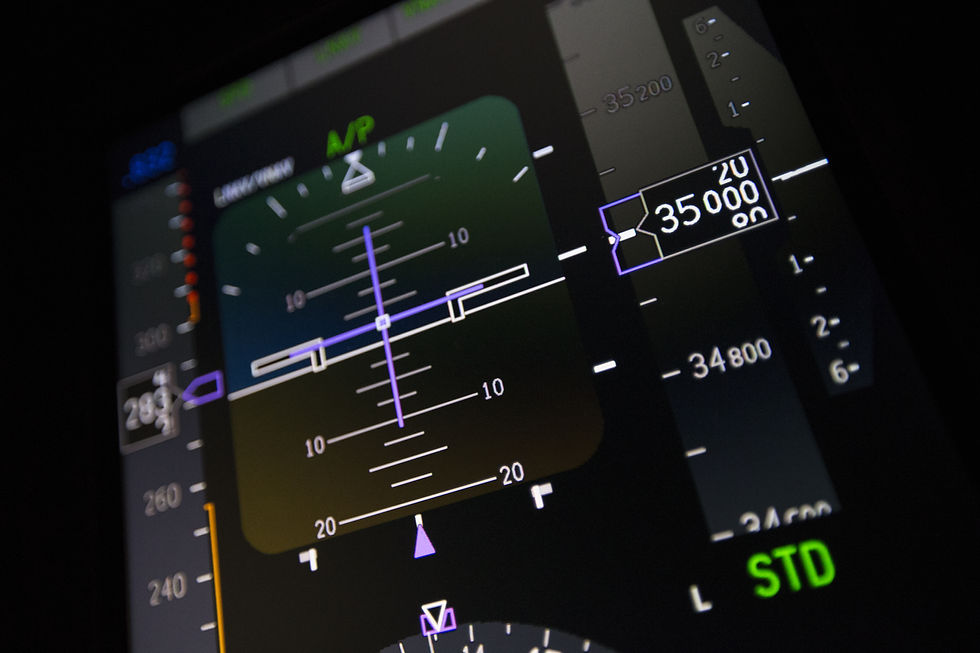A new approach
- Andreas
- Sep 23, 2018
- 2 min read
Updated: Apr 27, 2020
It used to be simple: There were „non-precision“ and „precision“ approaches. But things have changed quite a bit. The advent of performance based navigation (PBN) is only one aspect that comes into play here. Over the years, many new technologies and techniques have been developed and it is time for a “terminology cleanup”. New approach classifications have been established in ICAO Annex 6 [1]:
Type A: a minimum descent height or decision height at or above 75 m (250 ft);
Type B: a decision height below 75 m (250 ft).
A distinction is made between “Type A” and “Type B” approach, based on the minima. This is independent of the technology used. Additionally, ICAO now clearly separates approach design and operations. For operations, procedures are split into “2D” and “3D”, depending on the guidance available.
In the past, especially the introduction of the term “Approach with Vertical Guidance” (APV) has created confusion. Driven by PBN, the term APV did not include traditional ILS, despite the fact that ILS also provides vertical guidance…
Figure 1 below provides a summary of how current technologies fit into the new paradigm.

Figure 1: Approach technology and classifications overview based on [1] and [3]
The picture above makes it obvious: Conventional (non-PBN) procedures are less and less important, The European Commission mandates the exclusive use of PBN for procedure definition by Air Navigation Service Providers (ANSP), except for CAT II/III approaches, from the 6th June 2030 onwards [6]. ICAO plans to retain ILS for several decades to support precision approaches and mitigate GNSS-outages [5].
From a pilot’s perspective what really matters is whether vertical guidance is available or not. Many modern avionics provide “advisory” vertical guidance, even for NPA’s. So there is an interesting question that pops up here:
An NPA can be flown using “Continuous Decent Final Approach” (CDFA) technique, and using a pilot derived DA/H [1]. Obviously the published MDA/H remains as a hard limit. But what do applying CDFA-technique and using “advisory vertical guidance” mean with respect to 2D/3D-operations? ICAO annex 6 contains a very specific note on this subject [1]:
"Non-precision approach procedures may be flown using a continuous descent final approach (CDFA) technique. CDFAs with advisory VNAV guidance calculated by on-board equipment (see PANS-OPS (Doc 8168),Volume I, Part I, Section 4, Chapter 1, 1.8.1) are considered 3D instrument approach operations. CDFAs with manual calculation of the required rate of descent are considered 2D instrument approach operations."
The latest definitions certainly aim to simplify approach definitions, but there is still room for confusion as the following two facts demonstrate:
ICAO uses MDH or DH to distinguish between Type A and type B approach [1]. However, often the OCH is published and no MDH/DH [4].
An RNP approach using GNSS SBAS to LPV minima can be an APV but also a PA [2].
So the terminology situation is improving, but I have a feeling that this will not be the last post about that topic…
Rev/20180923
References:
[1] ICAO, Annex 6 Operation of Aircraft, part 1, 2016
[2] ICAO, Annex 10 Aeronautical Telecommunications, vol. 1, 6th ed. 2006
[3] Eurocontrol, “ICAO Framework and Approach Classification”, 2017
[4] Eurocontrol, “Approach classification issues”, 2017
[5] ICAO, 2016-2030 Global Air Navigation Plan, Fifth edition, 2016
[6] European Commission, Implementing Regulation 2018/1048, 2018



